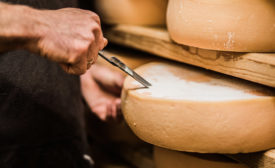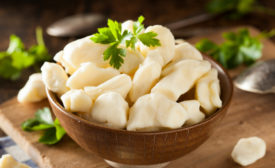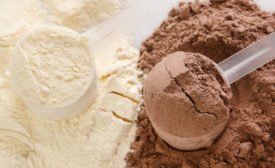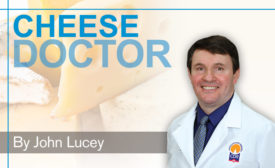John A. Lucey
John A. Lucey is a professor of food science at the University of Wisconsin, Madison, and the director of the Center for Dairy Research.
ARTICLES
Dissecting the differences: Cheese judging provides valuable feedback to cheesemakers
Read More
Causes of microbiological defects in cheese
Emerging technology for cheesemakers uses genomic techniques to track source of a microbial contaminate.
October 23, 2023
Equipment and techniques for making specialty cheeses
Innovations in artisan cheese, aged cheese dependent on equipment and cheesemaking process.
August 21, 2023
Sustainable Innovations in cheese packaging
Innovations in bioplastics using dairy waste can make packaging that is biodegradable.
April 21, 2023
Moving toward carbon neutral cheesemaking
Membrane filtration, renewable energy lessens impact on environment.
January 25, 2023
Can the dairy industry extend the squeakiness of fresh cheese curds?
Research underway to measure textural changes to prolong maximum flavor, squeak.
October 21, 2022
A closer look at Whey Protein Phospholipid Concentrate
Could this dairy by-product be the next big value-added ingredient?
August 1, 2022
It’s time to rethink whey permeate
Could the dairy industry turn whey permeate into value-added chemicals?
March 15, 2022
A reality check on animal-free ‘milk’
Milk is more than a collection of components; thus, it cannot easily be recreated in a lab.
January 3, 2022
The advantages, disadvantages of pasture-fed cow’s milk for cheese
Creating cheese with this type of milk adds distinct notes, but it also has downsides.
October 4, 2021
Get our new eMagazine delivered to your inbox every month.
Stay in the know on the latest dairy industry trends.
SUBSCRIBE TODAYCopyright ©2024. All Rights Reserved BNP Media.
Design, CMS, Hosting & Web Development :: ePublishing








